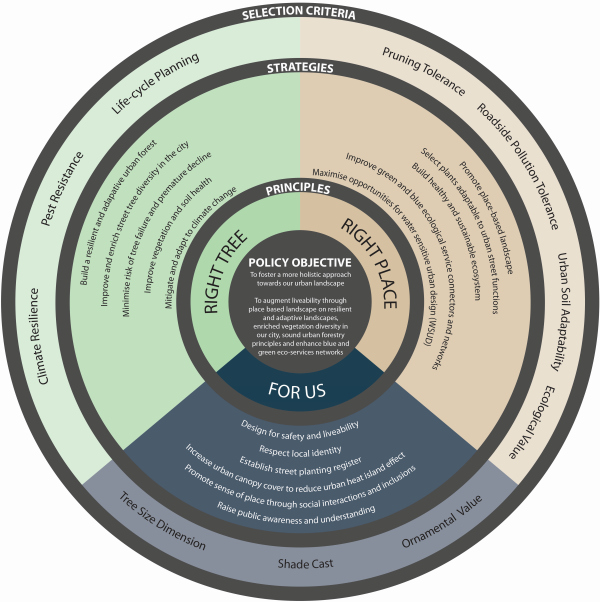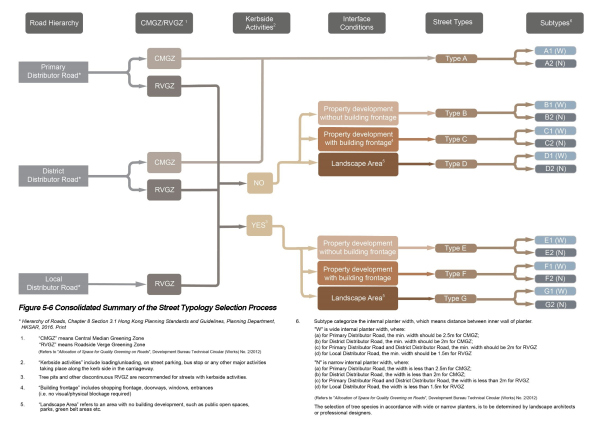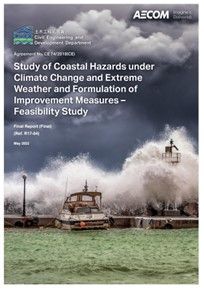You are here
Street Tree Selection Guide
Street Tree Selection Guide
* This article originates from Greening, Landscape & Tree Management Section Development Bureau (https://www.greening.gov.hk/en/greening-landscape/right-plant-right-place/street-tree-selection-guide/index.html)
The Greening, Landscape, and Tree Management Section (GLTMS) in the Development Bureau (DEVB) of the HKSAR commissioned a Consultancy Study to rationalise and guide the selection of street trees in Hong Kong. The purpose is to improve the resilience of the Territory’s urban forest by maximising species diversity under the principle of “Right Tree, Right Place” to improve ecological health upstream and in turn, minimise tree risks downstream.
A number of trees planted in the past might have been suitable for a particular location at that time. Some trees, such as afforestation pioneer planting on slopes, have out-grown their compact urban environment or are reaching the end of their life-cycle and are no longer appropriate. As trees are gradually due for replacement, it presents opportunities for the adoption of sustainable landscape strategies and practices. The result is the Street Ecology Strategy for Hong Kong (the Study). It aims to provides a strategic framework for sustainable long-term management of our street trees in a holistic manner, and forms part of government’s overall efforts in supporting the Hong Kong Biodiversity Strategy and Action Plan (BSAP), the Hong Kong’s Climate Action Plan 2030+ (CAP) and the Hong Kong 2030+: Towards a Planning Vision and Strategy Transcending 2030 (Hong Kong 2030+). The Study includes a Street Tree Selection Guide (the Guide). It is a practical reference tool to assist designers in selecting tree species suitable for different common streetscape typologies in the urban area1 of Hong Kong.
Policy Objective (Click below to enlarge)
This Study provides an analysis and evaluation of the current urban Hong Kong streetscape conditions and recommends a more diverse tree species list for different street types2. Methods of analysis include the overview of existing guidelines and ordinances, site observations, local experiences and valuable inputs from the landscape and arboriculture industry, relevant government departments and related disciplines.
The Study has found that the current Hong Kong roadside urban forest is dominated by a small range of 20 common tree species in large quantity and planted en-masse. Such homogenous planting or monoculture reduces plant diversity and make our urban forest more vulnerable to outbreaks of pests and diseases, and diminished soil quality. In response, 80 less commonly used but suitable tree species are recommended in the Guide to support a long term sustainable, healthy and resilient urban forest. Due to the scope and limitation of the Study, users are welcome to select other tree species not shortlisted using the same principles and methodology including the 20 common tree species, which are not in the Guide due to its abundance in stock. These commonly used species are however not encouraged to be widely planted as previously practised, to improve the vegetation diversity of our future urban forest.
The Guide is written for consultants, government works departments, professionals and practitioners, involved in street trees replacement and planting. To achieve a healthy and resilient urban forest, it recommends making reference to the 10-20-30 basic rule of plant diversity as a start, i.e. no more than 10% of any one species, 20% of any one genus and 30% of any one family. As roadside planting environment can be very different due to site specific landscape conditions such as narrow footpaths, underground utilities, microclimate, minimal air movement, etc., the Guide is not meant to be prescriptive. Professional advice from Landscape Architects and other relevant disciplines should be sought during the planning and design stages to ensure the overall street landscape as well as other supporting elements such as complementary vegetation community mixes (CVCM), tree pit details, structural soils or cells, drainage, below-ground infrastructure, etc. are duly taken into consideration.
The health of trees and vegetation starts with a favourable landscape from the outset to facilitate their subsequent maintenance. Designers and departments are encouraged to widely apply the Guide in the replacement and new street tree planting projects. With more practical applications of the shortlisted species, more experience can be developed to review and update the Guide. Users are encouraged to provide comments to the GLTMS so that continual improvements can be made for the future of our urban ecology.
1 For the purpose of this Study, urban area means built-up areas within the Hong Kong Island, Kowloon and the New Territories.
2 Expressways, highways and trunk roads were excluded in the analysis as both are considered to have very specific requirements to be studied separately.










